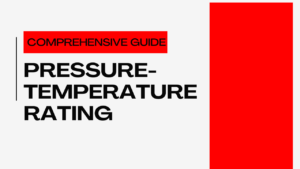Introduction:
When it comes to selecting the right materials for industrial applications, understanding the nuances between different types of steel pipes is crucial. Two commonly used specifications in the realm of steel piping are ASTM A671 and ASTM A333. In this article, we’ll delve into the distinctions, applications, and benefits of ASTM A671 vs ASTM A333, helping you gain clarity in your material selection process.
Table of Contents
Do not miss the detailed course 7 Modules of Piping Codes & Standards
Enrollment link
Check out the Similar Articles on ASTM Standards
The Role of Steel Pipes
Steel pipes are pivotal in industries ranging from construction and manufacturing to oil and gas. They provide the necessary infrastructure for the efficient movement of fluids and gases, and as such, their quality and performance are critical.
ASTM Standards for Steel Pipes
ASTM standards play a vital role in ensuring the quality, consistency, and suitability of steel pipes for a multitude of applications.
ASTM A671: Electric-Fusion-Welded Steel Pipe
ASTM A671 is a standard specification for electric-fusion-welded steel pipes designed for atmospheric and lower-temperature service. These pipes are commonly used for industrial and commercial applications.
ASTM A671 Classes
- Class 10: Pipe having a wall thickness of 0.250 in. (6.35 mm) or greater.
- Class 11: Pipe having a wall thickness less than 0.250 in. (6.35 mm).
- Class 12, 22, 32: Pipe of all classes with impact properties that apply only to tests performed at temperatures of -50°F [-45°C] or lower.
Chemical Composition of ASTM A671
The chemical composition of ASTM A671 pipes varies depending on the specific class and grade, necessitating reference to the relevant datasheet for precise information.
Do not miss the detailed course 7 Modules of Piping Codes & Standards
Enrollment link
ASTM A333: Seamless and Welded Steel Pipe
ASTM A333 is a standard specification for seamless and welded steel pipes designed for low-temperature service. These pipes are commonly used in applications where low temperatures are a concern.
ASTM A333 Grades
- Grade 1: Suitable for welding and forming operations at -50°F [-45°C].
- Grade 3: Charpy V-notch impact test at -150°F [-101°C].
- Grade 6: Charpy V-notch impact test at -50°F [-45°C].
Chemical Composition of ASTM A333 Grades
The chemical composition of ASTM A333 pipes varies by grade, ensuring suitability for different low-temperature applications.
Differences Between ASTM A671 and ASTM A333
ASTM A671 and ASTM A333 differ significantly in terms of their intended use, manufacturing process, and specific requirements.
Manufacturing Process
- ASTM A671: Involves electric-fusion welding and is primarily designed for atmospheric and lower-temperature service.
- ASTM A333: Encompasses both seamless and welded pipes, specially formulated for low-temperature service.
Application Focus
- ASTM A671: Geared toward industrial and commercial applications where lower temperatures and atmospheric conditions are prevalent.
- ASTM A333: Specifically tailored for applications requiring the conveyance of fluids or gases at significantly lower temperatures.
Do not miss the detailed course 7 Modules of Piping Codes & Standards
Enrollment link
Quality Control & Testing
Both ASTM A671 and ASTM A333 necessitate stringent quality control measures to ensure compliance with specified standards. Key quality control aspects encompass:
| Quality Control Measure | ASTM A671 | ASTM A333 |
|---|---|---|
| Chemical Analysis | Comprehensive chemical analysis to verify elemental composition adherence to standards. | Rigorous chemical analysis to ensure compliance with specified grade requirements. |
| Mechanical Testing | Mechanical testing, including tensile and impact tests, to validate material integrity. | Extensive mechanical testing, including tensile, impact, and hardness tests, tailored to specific grade requirements. |
| Non-Destructive Testing (NDT) | Non-destructive testing methods like ultrasonic testing (UT) and radiographic testing (RT) to identify surface and internal defects. | Extensive NDT methods, including ultrasonic, radiographic, and hydrostatic tests, to guarantee material integrity. |
| Visual Inspection | Thorough visual inspection to identify surface imperfections, weld defects, and dimensional conformity. | Visual inspection for surface imperfections, weld defects, and dimensional accuracy. |
ASTM A671 vs ASTM A333: Exploring the Differences
Overview of ASTM A671:
ASTM A671 is a specification for electric-fusion-welded steel pipe with filler metal added. This specification is designed for atmospheric and lower-temperature applications. The pipes manufactured under ASTM A671 are well-suited for use in industrial processes that involve moderate temperatures and pressure conditions. These pipes are commonly used in water supply systems, as well as in the chemical and petroleum industries.
Overview of ASTM A333:
On the other hand, ASTM A333 covers seamless and welded steel pipe for low-temperature service. Unlike ASTM A671, which primarily focuses on atmospheric conditions, ASTM A333 is specifically tailored for applications where low temperatures are a critical factor. These pipes find extensive use in industries such as cryogenic plants, refineries, and natural gas processing units.
Don’t miss the Complete Course on Piping Engineering: Check Now
By EPCLand.com
Structural Differences:
One of the key differences between ASTM A671 and ASTM A333 lies in their structural composition. ASTM A671 pipes are typically made from carbon-manganese steel, offering good tensile strength and weldability. On the other hand, ASTM A333 pipes are manufactured from carbon and alloy steel, with added elements like nickel and chromium to enhance their low-temperature performance.
Temperature Considerations:
The primary factor that sets these two specifications apart is the temperature range they can withstand. ASTM A671 pipes are suitable for temperatures ranging from ambient to moderate levels. In contrast, ASTM A333 pipes are specifically designed to operate efficiently in extremely low-temperature conditions, making them ideal for cryogenic applications.
Pressure Ratings:
While both specifications have their unique strengths, it’s important to note that ASTM A333 pipes generally have higher pressure ratings compared to ASTM A671 pipes. This characteristic makes ASTM A333 a preferred choice in scenarios where low temperatures and high pressures converge, such as in oil and gas pipelines operating in harsh environments.
Applications of ASTM A671 and ASTM A333:
- ASTM A671 Applications: These pipes are commonly used in water treatment plants, sewage systems, and chemical processing industries where moderate temperatures and pressures are involved. Their versatility and cost-effectiveness make them suitable for various applications.
- ASTM A333 Applications: The exceptional low-temperature properties of ASTM A333 pipes make them indispensable in industries dealing with liquefied natural gas (LNG), cryogenic storage, and refrigeration systems. They offer reliable performance even in the most frigid conditions.
Do not miss the detailed course 7 Modules of Piping Codes & Standards
Enrollment link
Exploring the Benefits of ASTM A671 and ASTM A333
Advantages of ASTM A671:
- Cost-Effective: ASTM A671 pipes are often more budget-friendly than their counterparts designed for extreme low-temperature applications.
- Versatility: These pipes find utility in a wide range of industries, making them versatile options for various projects.
- Ease of Installation: ASTM A671 pipes are known for their ease of installation, contributing to shorter project timelines.
Advantages of ASTM A333:
- Extreme Low-Temperature Performance: ASTM A333 pipes excel in environments with sub-zero temperatures, ensuring reliable operation.
- Robustness: The alloying elements in ASTM A333 pipes enhance their strength and durability, even in harsh conditions.
- Longevity: These pipes have a longer service life in low-temperature applications compared to other standard pipes.
Do not miss the detailed course 7 Modules of Piping Codes & Standards
Enrollment link
FAQs
What are the key differences between ASTM A671 and ASTM A333?
The main differences lie in their intended applications and temperature capabilities. ASTM A671 is suitable for moderate temperatures and pressures, while ASTM A333 excels in extremely low-temperature conditions.
Can ASTM A671 pipes be used in cryogenic applications?
No, ASTM A671 pipes are not designed for cryogenic applications. They are better suited for industrial processes with moderate temperature and pressure requirements.
What industries commonly use ASTM A333 pipes?
ASTM A333 pipes are extensively used in industries such as LNG production, cryogenic storage, and refineries, where extremely low temperatures are a concern.
Which specification is more cost-effective for general industrial applications?
ASTM A671 pipes are generally more cost-effective for applications that don’t involve extreme low temperatures. Their versatility makes them suitable for various projects.
Are there any corrosion considerations with these specifications?
Both ASTM A671 and ASTM A333 pipes may require corrosion protection measures, depending on the specific application and environmental conditions.
Can ASTM A333 pipes withstand high pressures?
Yes, ASTM A333 pipes are known for their higher pressure ratings compared to ASTM A671 pipes. This makes them a preferred choice for scenarios where low temperatures and high pressures intersect.
Conclusion:
In the realm of steel piping, choosing between ASTM A671 and ASTM A333 requires a clear understanding of your project’s temperature and pressure requirements. While ASTM A671 suits applications with moderate conditions, ASTM A333 stands out in low-temperature environments. By comprehending the differences and benefits of these specifications, you can confidently make the right choice for your industrial needs.
Recommended courses (Published on EPCLand):
- Basics of Piping Engineering
- Piping Layout Engineering
- Piping Material Engineering
- Piping Stress Analysis
- Complete Course on Piping Engineering
- Material Requisitions
- Piping Material Specifications
- Valve Material Specifications
Related Video
Attempt Quiz
Question 1:
What is the primary difference between ASTM A671 and ASTM A333?
Explanation: The primary difference between ASTM A671 and ASTM A333 is that A671 is a specification for electric-fusion-welded steel pipe for atmospheric and lower temperatures, while A333 covers both seamless and welded steel pipe for low-temperature service.
Question 2:
What is the intended application of ASTM A671 steel pipes?
Explanation: ASTM A671 steel pipes are intended for atmospheric and lower temperature applications, often used in projects such as oil and gas pipelines, as well as other industrial and infrastructure applications.
Question 3:
Which type of steel is typically used in ASTM A333?
Explanation: ASTM A333 commonly uses carbon and low-alloy steel, which provides good low-temperature toughness and weldability for various applications.
Question 4:
Which environments are ASTM A333 steel pipes suitable for?
Explanation: ASTM A333 steel pipes are suitable for use in cryogenic conditions and low-temperature environments, making them ideal for applications where toughness at low temperatures is crucial.
Question 5:
Which ASTM specification is focused on welded steel pipes?
Explanation: ASTM A671 is focused on electric-fusion-welded steel pipe, while ASTM A333 covers both seamless and welded steel pipe, making A671 more specifically related to welded pipes.



